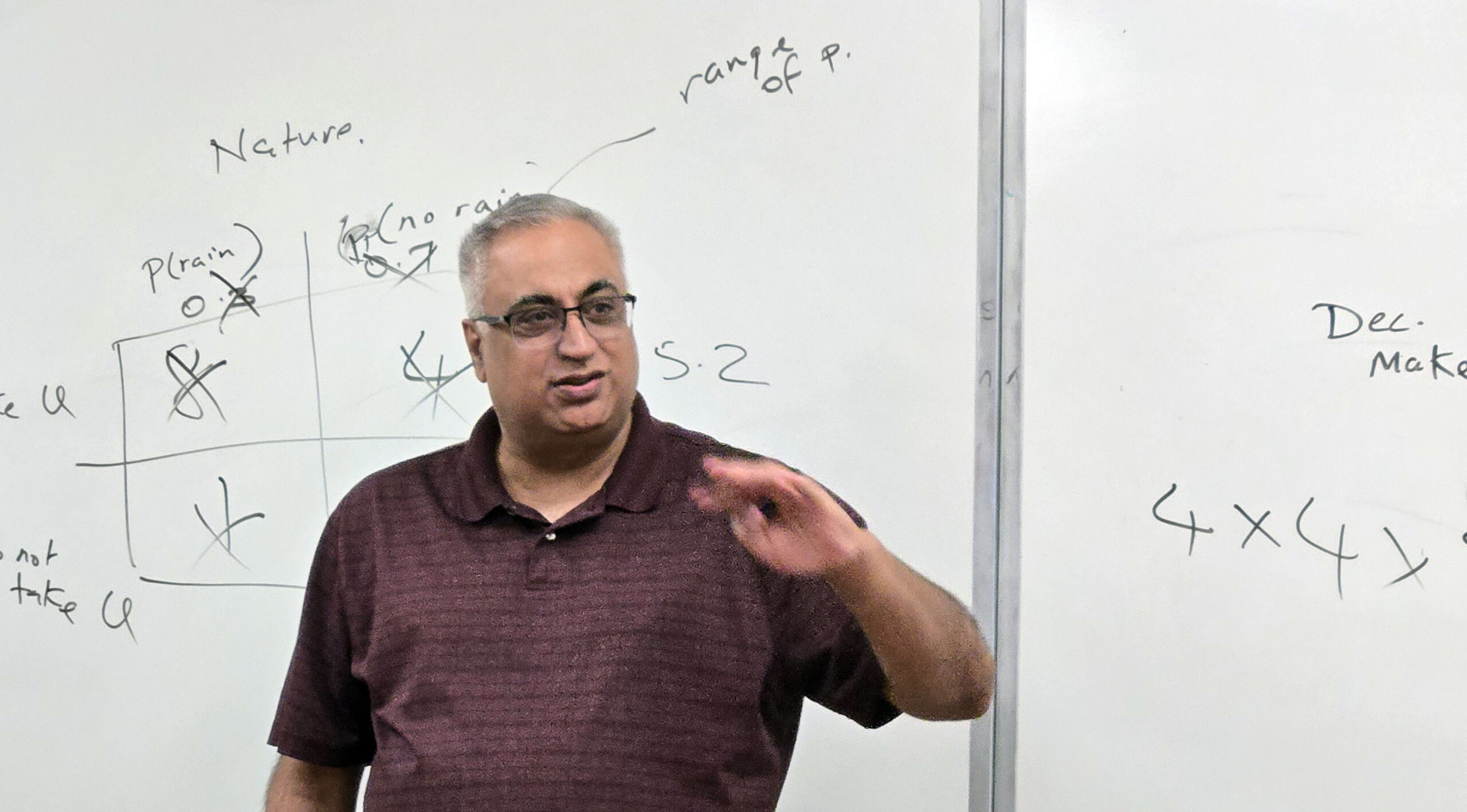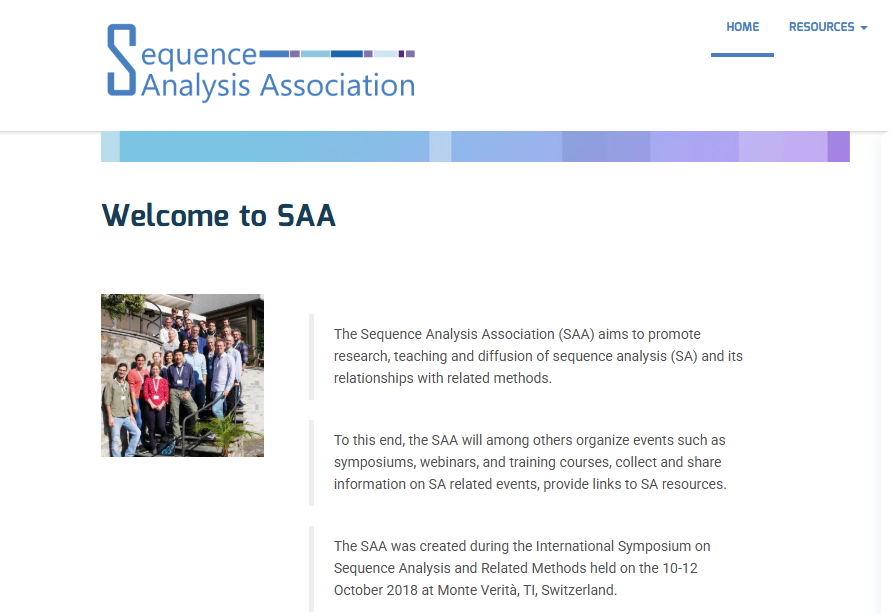Bridge structural holes
Individuals with high betweenness centrality are more likely to bridge structural holes and act as key conduits for information flow.
- True: Betweenness centrality measures how often an individual acts as a bridge between other nodes in a network. Individuals with high betweenness centrality are critical in connecting different parts of the network, meaning they are often positioned at structural holes (gaps between disconnected groups), making them key conduits for information flow.
- Relevant Citation: Freeman, L. C. (1979). Centrality in social networks: Conceptual clarification. Social Networks, 1(3), 215-239.
- Additional Citation: Burt, R. S. (2004). Structural holes and good ideas. American Journal of Sociology, 110(2), 349-399.
Weak ties are more likely to bridge structural holes and act as key conduits for information flow.
- True: Granovetter’s theory of weak ties suggests that weak ties (acquaintances) are more likely to bridge structural holes because they connect people from different social groups. These weak ties act as conduits for new or non-redundant information, making them essential for spreading information across the network.
- Relevant Citation: Granovetter, M. S. (1973). The strength of weak ties. American Journal of Sociology, 78(6), 1360-1380.
- Additional Citation: Burt, R. S. (2004). Structural holes and good ideas. American Journal of Sociology, 110(2), 349-399.
Here are the key social network concepts discussed in the excerpt from Ronald S. Burt’s “The Social Structure of Competition”:
Social Capital: This refers to the benefits and advantages derived from an individual’s network of relationships. It encompasses opportunities, information, and resources that flow through these connections.
- Relevant papers:
- Bourdieu, P. (1986). The forms of capital. In J. Richardson (Ed.), Handbook of Theory and Research for the Sociology of Education (pp. 241-258). Greenwood.
- Coleman, J. S. (1988). Social capital in the creation of human capital. American Journal of Sociology, 94, S95-S120.
- Putnam, R. D. (2000). Bowling Alone: The Collapse and Revival of American Community. Simon & Schuster.
Structural Holes: These represent gaps or disconnections between different clusters or groups within a social network. Individuals who bridge these structural holes enjoy information and control benefits.
- Relevant papers:
- Burt, R. S. (1992). Structural Holes: The Social Structure of Competition. Harvard University Press.
- Burt, R. S. (2004). Structural holes and good ideas. American Journal of Sociology, 110(2), 349-399.
Weak Ties: Granovetter’s concept that weaker, less frequent connections often bridge structural holes and provide access to novel information and opportunities outside one’s immediate circle.
- Relevant papers:
- Granovetter, M. S. (1973). The strength of weak ties. American Journal of Sociology, 78(6), 1360-1380.
Entrepreneurs: Individuals who leverage structural holes for information and control benefits, generating profit by acting as intermediaries between others.
- Relevant papers:
- Burt, R. S. (1992). Structural Holes: The Social Structure of Competition. Harvard University Press.
- Burt, R. S. (2005). Brokerage and Closure: An Introduction to Social Capital. Oxford University Press.
Structural Autonomy: The extent to which a player’s network is rich in structural holes, providing entrepreneurial opportunities, information advantages, and control in negotiations. It summarizes the action potential of a network.
- Relevant papers:
- Burt, R. S. (1992). Structural Holes: The Social Structure of Competition. Harvard University Press.
- Burt, R. S. (1997). The contingent value of social capital. Administrative Science Quarterly, 42(2), 339-365.
Tertius Gaudens (“The Third Who Benefits”): The ability to profit from the disunion or competition between others by playing their interests against each other.
- Relevant papers:
- Burt, R. S. (1992). Structural Holes: The Social Structure of Competition. Harvard University Press.
- Obstfeld, D. (2005). Social networks, the tertius iungens orientation, and involvement in innovation. Administrative Science Quarterly, 50(1), 100-130.
Redundant Contacts: Individuals within a network who provide overlapping information and access to the same resources.
- Relevant papers:
- Burt, R. S. (1992). Structural Holes: The Social Structure of Competition. Harvard University Press.
- Granovetter, M. S. (1985). Economic action and social structure: The problem of embeddedness. American Journal of Sociology, 91(3), 481-510.
Types of Network structure:
Refers to the overall pattern or arrangement of relationships (ties) between individuals or groups within a social network. It focuses on how these connections are organized and how they influence the flow of information, resources, and interactions within the network.
Key Elements of Network Structure:
- Closure: A network has *closure* when everyone in the network is connected to everyone else. It promotes trust and cooperation but may limit access to new information since everyone shares similar knowledge.
– Example: A small, tightly-knit work team where all members know each other well.
- Structural Holes: These are gaps in the network where two groups or individuals are not directly connected. A person who bridges these gaps (a broker) can control the flow of information between groups, gaining power and influence.
– Example: A manager who connects different departments within a company, acting as a link between them.
- Density: This describes how many of the possible connections between people in a network are actually present. A dense network has lots of direct connections, while a sparse network has fewer.
– Example: In a dense network, almost everyone knows everyone else, while in a sparse network, people only know a few others.
- Centrality: Refers to how central or important a person or group is within a network, based on how many connections they have. Someone with high centrality is influential because they have more direct ties to others.
– Example: A well-connected employee who interacts with many departments, making them a central figure in the organization.
■ Coleman emphasizes the importance of network closure for fostering trust and norms, suggesting that densely connected networks where most members know each other facilitate social control and the enforcement of shared expectations (Coleman, 1988).
- Citation: Coleman, J. S. (1988). Social capital in the creation of human capital. American Journal of Sociology, 94, S95-S120.
■ Burt, on the other hand, focuses on the benefits of sparse networks with structural holes. Structural holes refer to gaps in a network where individuals or groups are not directly connected. Burt argues that individuals occupying these structural holes can access diverse information and broker connections between otherwise unconnected groups, giving them an advantage (Burt, 1992).
- Citation: Burt, R. S. (1992). Structural Holes: The Social Structure of Competition. Harvard University Press.
- Granovetter Weak Ties ⇒ Burts Structural Holes
Granovetter’s weak ties theory shows that casual acquaintances (weak ties) are valuable because they connect you to new information outside your close circle (Granovetter, 1973). Burt’s structural holes concept explains that people who bridge gaps between unconnected groups (filling structural holes) gain an advantage by controlling the flow of information (Burt, 1992). Together, weak ties give access to new information, and structural holes show the power of being the link between disconnected groups.
- Granovetter Citation: Granovetter, M. S. (1973). The strength of weak ties. American Journal of Sociology, 78(6), 1360-1380.
- Burt Citation: Burt, R. S. (1992). Structural Holes: The Social Structure of Competition. Harvard University Press.
- Borgatti 2005 Centrality and network flow ⇒ Freeman Centrality in Social Networks Conceptual Clarification
Freeman’s 1979 work explains how to measure the importance of different people (or “nodes”) in a network based on their position. He describes three main ways to do this: how many direct connections someone has (degree centrality), how often someone acts as a bridge between others (betweenness centrality), and how close someone is to everyone else (closeness centrality) (Freeman, 1979).
Borgatti’s 2005 work builds on this by showing how these different types of importance affect how things like information, resources, or goods flow through the network. For example, if information spreads by direct contact, degree centrality matters most. If someone controls the flow of information between groups, betweenness centrality is important. If quick access to everyone is needed, closeness centrality is key. Borgatti adds to Freeman’s ideas by connecting these measures of importance to how things actually move within the network (Borgatti, 2005).
- Freeman Citation: Freeman, L. C. (1979). Centrality in social networks: Conceptual clarification. Social Networks, 1(3), 215-239.
- Borgatti Citation: Borgatti, S. P. (2005). Centrality and network flow. Social Networks, 27(1), 55-71.
- Krackhardt’s 1992 paper, “The Strength of Strong Ties ⇒ Granovetter’s “Strength of Weak Ties” (1973)
Granovetter’s Strength of Weak Ties (1973) argues that weak ties (acquaintances) are valuable for spreading new information and connecting different social groups. These ties act as bridges, providing access to novel ideas and opportunities, which are crucial for innovation and social mobility (Granovetter, 1973).
In contrast, Krackhardt’s Strength of Strong Ties (1992) emphasizes the importance of strong, trust-based relationships (philos) in organizations. Strong ties provide trust, support, and reliability, which are essential during times of uncertainty or crisis, fostering collaboration and stability (Krackhardt, 1992).
While weak ties help with innovation and access to new information, strong ties are critical for trust and stability in complex or high-risk situations. Both types of ties serve different, but complementary, roles in social networks.
- Granovetter Citation: Granovetter, M. S. (1973). The strength of weak ties. American Journal of Sociology, 78(6), 1360-1380.
- Krackhardt Citation: Krackhardt, D. (1992). The strength of strong ties: The importance of philos in organizations. In N. Nohria & R. G. Eccles (Eds.), Networks and Organizations: Structure, Form, and Action (pp. 216-239). Harvard Business School Press
Network Embeddedness refers to how deeply a node (such as an individual, group, or organization) is situated or integrated within a network of relationships. In social networks, it emphasizes the extent to which a node is connected to other nodes and how these connections influence the behavior, performance, or outcomes of that node (Granovetter, 1985).
Key Aspects of Network Embeddedness:
- Positional Embeddedness: This refers to a node’s position in the network. A node is said to be highly embedded if it is central, well-connected, or integrated with other influential nodes. Embeddedness can affect access to resources, information, and influence (Uzzi, 1997).
- Relational Embeddedness: This focuses on the quality of the relationships between nodes. Strong, trust-based ties often indicate higher relational embeddedness. Nodes with strong relationships are more likely to have stable interactions and access to valuable information (Granovetter, 1985; Uzzi, 1997).
- Structural Embeddedness: This refers to the broader network structure in which a node is situated. It considers the overall configuration of relationships, such as clusters, bridges, and overall density of the network, affecting how embedded a node is within the larger social structure (Uzzi, 1997).
- Granovetter Citation: Granovetter, M. S. (1985). Economic action and social structure: The problem of embeddedness. American Journal of Sociology, 91(3), 481-510.
- Uzzi Citation: Uzzi, B. (1997). Social structure and competition in interfirm networks: The paradox of embeddedness. Administrative Science Quarterly, 42(1), 35-67.
- Impeding Networks: These networks comprise employees who make it more difficult for others to complete their tasks. Impeding behaviors can involve withholding resources, providing incorrect information, or wasting time. This “dark side” of social networks can significantly affect employee performance, especially in challenging periods like the implementation of new systems.
- Advice Networks: These networks consist of employees who seek and provide work-related information, assistance, and expertise. Advice ties in the workplace help improve access to necessary resources, knowledge, and support. This is crucial for employees during organizational changes like an enterprise system (ES) implementation.
- Expressive Ties (friendship-based): These ties are based on affective relationships, such as friends who provide emotional support and advice.
- Instrumental Ties (acquaintance-based): These are more transactional relationships formed for work-related information and advice, often less emotional but more objective.
- Network Density: This refers to the number of help ties an individual has in relation to the maximum possible ties. It captures how embedded an employee is in the network of individuals they seek help from.
- Network Centrality: This is a measure of how central an individual is in giving help to others within the organizational unit. A highly central individual has many “give-help” ties and is seen as influential.
- Valued Network Density: This concept goes beyond simple density by taking into account the strength of ties and the value of the resources (such as system-related knowledge) that individuals provide.
- Valued Network Centrality: This measure is similar to network centrality but also incorporates the perceived value of the system-related knowledge, information, and resources that individuals control. It reflects the influence of those who are highly knowledgeable or resourceful within the network.
- Vision Advantage: The ability of brokers to see more options and generate better ideas due to their access to diverse information from different groups.
- Network Constraint: A measure of how much a person’s network is interconnected. High constraint means a person’s contacts are heavily interconnected, limiting their access to diverse information, while low constraint suggests greater access to new information through unconnected groups.
- Knowledge Complexity: The effectiveness of weak and strong ties depends on the complexity of the knowledge. Codified, independent knowledge (simple knowledge) can be transferred easily through weak ties. However, non-codified, dependent knowledge (complex knowledge) requires strong ties for successful transfer.
- Network Centrality: Centrality measures how influential or central a person is within their network. Higher centrality means an individual is connected to many others and provides more help or resources.
- Valued Network Density: This refers to the quality of ties, specifically whether individuals are seeking help from peers who control valuable information and resources that are important for completing tasks.
- Valued Network Centrality: This measures the influence of an individual based on their control over valuable resources or knowledge that is seen as important by others in the network.
- Intellectual Capital: Intellectual Capital refers to the knowledge, skills, and expertise that people in a group, organization, or community have.
- Tertius Iungens Orientation: This concept refers to a strategic behavior where an individual seeks to connect people in their social network, facilitating collaboration between disconnected or loosely connected individuals. The focus is on uniting people to foster innovation and coordinated action.
- Tertius Gaudens Orientation: This contrasts with the tertius iungens orientation and is based on exploiting the gaps (structural holes) between people for personal advantage. The tertius gaudens keeps people separated to benefit from their disconnection, which is closely linked to Burt’s structural holes theory.
- Social Cohesion: Social cohesion means that people in a group are connected to each other through mutual friends or colleagues. When everyone knows and trusts each other, they are more likely to share information and help one another. This feeling of being part of a closely connected group makes people cooperate more and follow shared rules or behaviors, making it easier to work together and exchange knowledge.
- Network Range: Refers to the extent to which a person’s network spans across different groups or knowledge pools. Having a network with greater range allows individuals to access and convey more diverse knowledge, facilitating knowledge transfer across different communities or domains.
- Tie Strength: Refers to the frequency and intensity of interactions between individuals. Strong ties promote effective knowledge transfer, especially when dealing with complex or tacit knowledge.
- Absorptive Capacity: The concept that the ability to absorb and apply new knowledge is enhanced when individuals have shared knowledge or expertise with the knowledge source.
- Intellectual Capital: The knowledge and knowing capability of a social collectivity, such as an organization. The paper argues that social capital is essential for creating intellectual capital through the exchange and combination of knowledge.
- Convergence happens when people adopt the same tastes to fit in with a desired group. For example, individuals might wear specific clothing brands or listen to certain music genres associated with a particular social group to signal their membership.
- Divergence occurs when people abandon tastes that have been adopted by groups they wish to differentiate themselves from. They may seek out new and unique tastes to maintain their distinct identity or to avoid being associated with an undesired group.
- Structural Positioning: The belief system is viewed as a network, where some beliefs (nodes) are more central, connecting different belief clusters (edges or ties). Structural features like central-periphery relationships are key in understanding how certain beliefs organize others in the network.
- Geodesic Paths: The shortest paths between nodes (geodesics) play a significant role in identifying central beliefs. Beliefs that lie on more geodesics are considered more central.
- Interlocking Directorates: This happens when the same people sit on the boards of multiple companies. These connections between companies help spread practices like using the poison pill to prevent takeovers.
- Structural Equivalence: This concept refers to firms adopting the poison pill not necessarily through direct ties but because they occupy similar positions in the market and imitate competitors, following norms of corporate behavior in their industry.
- Agency theory, which suggests managers may act in their own interests instead of what’s best for shareholders.
- interorganizational theory, which looks at how companies are connected through shared directors who sit on multiple boards.
- Network Proximity: This concept focuses on the closeness of individuals within social networks. Employees who are closely connected through friendship or advice networks are likely to share similar perceptions of their work environment due to direct social influence.
- Social Comparison: This idea explains that people compare their thoughts and beliefs with those of their friends to help make sense of their own views. Through these comparisons, they often end up sharing similar ideas about how things should work at their job.
- Attributional Similarity: This means that friends at work tend to agree more on why people act the way they do (like whether a coworker is hardworking or laid back) because they interpret behavior in similar ways.
- Cognitive Dissonance and Job Satisfaction: If friends at work disagree on how they see things, it can create tension (called cognitive dissonance), making them uncomfortable. The more people agree with their friends, the happier they tend to be with their jobs
- Role Equivalence: This concept explains that employees are considered similar (equivalent) in their roles if they communicate with the same or similar people. These role similarities play a key role in predicting clusters of turnover within an organization.
- Turnover Clusters: The paper introduces the idea that turnover happens in clusters, meaning employees who are similar in their communication roles tend to leave together. This challenges the idea that turnover is random and shows it is embedded in social relationships.
- Bonding in Social Network Analysis (SNA) refers to the creation of strong, close-knit relationships within a group of individuals or nodes. These bonds typically form within homogeneous groups, where individuals share similar characteristics, such as background, interests, or social status. Bonding social capital is characterized by high levels of trust, reciprocity, and emotional support among members of the group.
- Diffusion of Strategies: The paper examines how strategies like expansion into China spread through these interlocking networks, influenced by connections to successful adopters, unsuccessful adopters, or non-adopters, showing that not all ties have the same impact.
- Strategic Imitation: Firms are influenced by their network ties, and the likelihood of adopting a strategy can depend on whether they are tied to firms that have successfully or unsuccessfully adopted the strategy.
- Cross-Boundary Exchange: This refers to the relationships and exchanges between different types of organizations (e.g., governmental and non-governmental). A high level of cross-boundary exchange indicates effective collaboration across different sectors.
- Collaborative Governance: The paper explores how stakeholders from different sectors (governmental and non-governmental) work together in managing floodplains. Social networks are analyzed to understand the role of collaboration between these actors in achieving flood protection and nature conservation goals.
- Resource-Based View (RBV): The paper discusses the role of social networks in organizing valuable resources. Social networks help in the construction of connections, direction, and resource allocation, which contributes to achieving personal and organizational goals.
- Impeding Networks: These networks comprise employees who make it more difficult for others to complete their tasks. Impeding behaviors can involve withholding resources, providing incorrect information, or wasting time. This “dark side” of social networks can significantly affect employee performance, especially in challenging periods like the implementation of new systems (Krackhardt & Hanson, 1993).
- Advice Networks: These networks consist of employees who seek and provide work-related information, assistance, and expertise. Advice ties in the workplace help improve access to necessary resources, knowledge, and support. This is crucial for employees during organizational changes like an enterprise system (ES) implementation (Cross, Borgatti, & Parker, 2001).
- Expressive Ties (friendship-based): These ties are based on affective relationships, such as friends who provide emotional support and advice (Ibarra, 1993).
- Instrumental Ties (acquaintance-based): These are more transactional relationships formed for work-related information and advice, often less emotional but more objective (Ibarra, 1993).
- Network Density: This refers to the number of help ties an individual has in relation to the maximum possible ties. It captures how embedded an employee is in the network of individuals they seek help from (Burt, 2000).
- Network Centrality: This is a measure of how central an individual is in giving help to others within the organizational unit. A highly central individual has many “give-help” ties and is seen as influential (Freeman, 1979).
- Valued Network Density: This concept goes beyond simple density by taking into account the strength of ties and the value of the resources (such as system-related knowledge) that individuals provide (Cross & Cummings, 2004).
- Valued Network Centrality: This measure is similar to network centrality but also incorporates the perceived value of the system-related knowledge, information, and resources that individuals control. It reflects the influence of those who are highly knowledgeable or resourceful within the network (Cross, Borgatti, & Parker, 2001).
- Vision Advantage: The ability of brokers to see more options and generate better ideas due to their access to diverse information from different groups (Burt, 2004).
- Network Constraint: A measure of how much a person’s network is interconnected. High constraint means a person’s contacts are heavily interconnected, limiting their access to diverse information, while low constraint suggests greater access to new information through unconnected groups (Burt, 1992).
- Knowledge Complexity: The effectiveness of weak and strong ties depends on the complexity of the knowledge. Codified, independent knowledge (simple knowledge) can be transferred easily through weak ties. However, non-codified, dependent knowledge (complex knowledge) requires strong ties for successful transfer (Hansen, 1999).
- Network Centrality: Centrality measures how influential or central a person is within their network. Higher centrality means an individual is connected to many others and provides more help or resources (Freeman, 1979).
- Valued Network Density: This refers to the quality of ties, specifically whether individuals are seeking help from peers who control valuable information and resources that are important for completing tasks (Cross & Cummings, 2004).
- Valued Network Centrality: This measures the influence of an individual based on their control over valuable resources or knowledge that is seen as important by others in the network (Cross, Borgatti, & Parker, 2001).
- Intellectual Capital: Intellectual Capital refers to the knowledge, skills, and expertise that people in a group, organization, or community have (Nahapiet & Ghoshal, 1998).
- Tertius Iungens Orientation: This concept refers to a strategic behavior where an individual seeks to connect people in their social network, facilitating collaboration between disconnected or loosely connected individuals. The focus is on uniting people to foster innovation and coordinated action (Obstfeld, 2005).
- Tertius Gaudens Orientation: This contrasts with the tertius iungens orientation and is based on exploiting the gaps (structural holes) between people for personal advantage. The tertius gaudens keeps people separated to benefit from their disconnection, which is closely linked to Burt’s structural holes theory (Burt, 1992).
- Social Cohesion: Social cohesion means that people in a group are connected to each other through mutual friends or colleagues. When everyone knows and trusts each other, they are more likely to share information and help one another (Granovetter, 1973).
- Network Range: Refers to the extent to which a person’s network spans across different groups or knowledge pools. Having a network with greater range allows individuals to access and convey more diverse knowledge, facilitating knowledge transfer across different communities or domains (Burt, 2000).
- Tie Strength: Refers to the frequency and intensity of interactions between individuals. Strong ties promote effective knowledge transfer, especially when dealing with complex or tacit knowledge (Granovetter, 1973).
- Absorptive Capacity: The concept that the ability to absorb and apply new knowledge is enhanced when individuals have shared knowledge or expertise with the knowledge source (Cohen & Levinthal, 1990).
- Intellectual Capital: The knowledge and knowing capability of a social collectivity, such as an organization. The paper argues that social capital is essential for creating intellectual capital through the exchange and combination of knowledge (Nahapiet & Ghoshal, 1998).
- Convergence happens when people adopt the same tastes to fit in with a desired group. For example, individuals might wear specific clothing brands or listen to certain music genres associated with a particular social group to signal their membership (Berger & Heath, 2007).
- Divergence occurs when people abandon tastes that have been adopted by groups they wish to differentiate themselves from. They may seek out new and unique tastes to maintain their distinct identity or to avoid being associated with an undesired group (Berger & Heath, 2007).
- Structural Positioning: The belief system is viewed as a network, where some beliefs (nodes) are more central, connecting different belief clusters (edges or ties). Structural features like central-periphery relationships are key in understanding how certain beliefs organize others in the network (Boutyline & Vaisey, 2017).
- Geodesic Paths: The shortest paths between nodes (geodesics) play a significant role in identifying central beliefs. Beliefs that lie on more geodesics are considered more central (Freeman, 1979).
- Interlocking Directorates: This happens when the same people sit on the boards of multiple companies. These connections between companies help spread practices like using the poison pill to prevent takeovers (Davis, 1991).
- Structural Equivalence: This concept refers to firms adopting the poison pill not necessarily through direct ties but because they occupy similar positions in the market and imitate competitors, following norms of corporate behavior in their industry (Burt, 1987).
- Agency theory, which suggests managers may act in their own interests instead of what’s best for shareholders (Jensen & Meckling, 1976).
- Interorganizational theory, which looks at how companies are connected through shared directors who sit on multiple boards (Mizruchi, 1996).
- Network Proximity: This concept focuses on the closeness of individuals within social networks. Employees who are closely connected through friendship or advice networks are likely to share similar perceptions of their work environment due to direct social influence (Ibarra, 1993).
- Social Comparison: This idea explains that people compare their thoughts and beliefs with those of their friends to help make sense of their own views (Festinger, 1954).
- Attributional Similarity: This means that friends at work tend to agree more on why people act the way they do (like whether a coworker is hardworking or laid back) because they interpret behavior in similar ways (Ibarra & Andrews, 1993).
- Cognitive Dissonance and Job Satisfaction: If friends at work disagree on how they see things, it can create tension (called cognitive dissonance), making them uncomfortable. The more people agree with their friends, the happier they tend to be with their jobs (Krackhardt & Kilduff, 1990).
- Role Equivalence: This concept explains that employees are considered similar (equivalent) in their roles if they communicate with the same or similar people. These role similarities play a key role in predicting clusters of turnover within an organization (Krackhardt & Porter, 1986).
- Turnover Clusters: The paper introduces the idea that turnover happens in clusters, meaning employees who are similar in their communication roles tend to leave together. This challenges the idea that turnover is random and shows it is embedded in social relationships (Krackhardt & Porter, 1986).
- Bonding in Social Network Analysis (SNA) refers to the creation of strong, close-knit relationships within a group of individuals or nodes. These bonds typically form within homogeneous groups, where individuals share similar characteristics, such as background, interests, or social status. Bonding social capital is characterized by high levels of trust, reciprocity, and emotional support among members of the group (Putnam, 2000).
- Diffusion of Strategies: The paper examines how strategies like expansion into China spread through these interlocking networks, influenced by connections to successful adopters, unsuccessful adopters, or non-adopters, showing that not all ties have the same impact (Connelly et al., 2011).
- Strategic Imitation: Firms are influenced by their network ties, and the likelihood of adopting a strategy can depend on whether they are tied to firms that have successfully or unsuccessfully adopted the strategy (Connelly et al., 2011).
- Cross-Boundary Exchange: This refers to the relationships and exchanges between different types of organizations (e.g., governmental and non-governmental). A high level of cross-boundary exchange indicates effective collaboration across different sectors (Fliervoet et al., 2016).
- Collaborative Governance: The paper explores how stakeholders from different sectors (governmental and non-governmental) work together









Leave a Reply